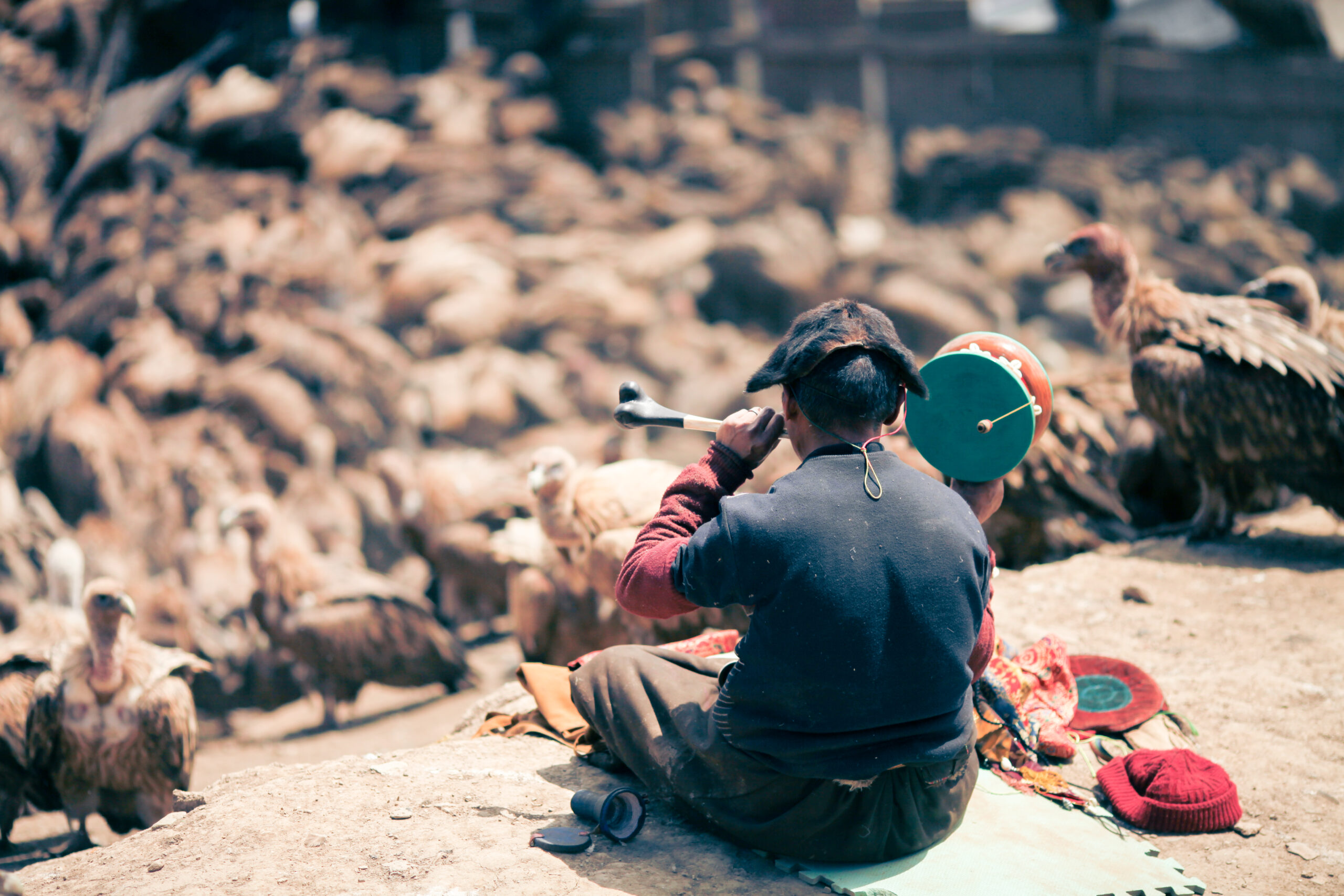
2021.6.10
“To Eat and To Be Eaten”
Mr. Tatsushi Fujihara, Historian
As human beings, we can eat certain things. But we can also be eaten by other living things. Once we have ceased to live ourselves, we can become a food source for the countless life forms living in the soil or flying through the air, if we are buried in the earth, or left under the sky. Of course, this natural balance is no rosy picture. Towards the end of WWII, in present-day Myanmar, during the Battle of Imphal, in which Japanese and British forces clashed, the bodies of the soldiers who died in battle, or from starvation, due to the reckless stratagems of base command were left behind in the jungle, and because of the high temperature and humidity of the rainy climate, they were soon reduced to skeletons. This earned that place the name “Road of Bone,” but their bodies would not have decomposed without the help of countless microorganisms. Failing to receive a proper burial, witnessed by family and friends, they were abandoned by their nation, but the dead were eagerly approached by swarms of tiny creatures.
Yet even before dying, we are already food. In his book Never Home Alone, biologist Rob Dunn writes that each of us sheds over fifty million flakes of skin in a single day. And upon each of these flakes of skin, fluttering through the air, live thousands of bacteria that consume them. But that’s not all. The hairs that fall out of our skin onto the floor become a feast for the mites and bacteria which live there. Dunn tells us that we live our lives accompanied by two hundred thousand different species of microorganisms.
Our secretions, too, are food. It’s common knowledge that the sweat dripping from our skin is food for resident microbiota, while our excrement is food for intestinal bacteria. In recent years, the vital role our coexistence with this microflora plays in immune functions has finally received attention.
We may wish to think otherwise, but human beings cannot escape predation. If we make our home in close proximity to crocodiles, or tigers, or bears, or sharks, it should come as no surprise if we eventually become a meal.
But who among us thinks of themselves as food waiting to be eaten? Who lives their life aware of being a potentially delicious meal for some creature in nature? Almost no one. Since odds are high that after dying we’ll be cremated, releasing large amounts of dioxins as we turn to bone and ash, then saved in urns, isolated from the workings of the soil, we’re not used to thinking of ourselves as food.
The biologist Bernd Heinrich, in his book Life Everlasting: The Animal Way of Death, describes his correspondence with a critically ill colleague whose preference is a natural funeral. Death is described as “a wild celebration of renewal,” and the commercial transaction of cremation as a deviation from this natural process. In my native Shimane Prefecture, my family was buried in the earth for generations, up until my great-grandfather and great grandmother. There is a hilltop graveyard surrounded by rice fields where a great number of my ancestors have become the sustenance of microbes in the soil, transforming their bodies into local flora.
We must acknowledge that the question of what it means for human beings to eat, and what it means for human beings to be eaten, are but two sides of the same coin.
Translated by Sam Bett
